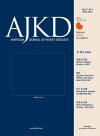A Close Look at Metabolic Dysfunction in Autosomal Dominant Polycystic Kidney Disease: From Bench to Imaging
Autosomal dominant polycystic kidney disease (ADPKD) is the most common monogenic kidney disease, affecting up to 12 million people worldwide.1 Mutations in 2 major genes, PKD1 and PKD2, account for 70%-85% and 15%-30% of genetically resolved cases, respectively.2 Currently, algorithms employing mutation class or total kidney volume (TKV) by magnetic resonance imaging (MRI) as a proxy for cystic burden have been used for clinical risk prediction of disease progression in ADPKD. However, these prognostic tools do not fully explain the wide kidney disease variability described in ADPKD.



